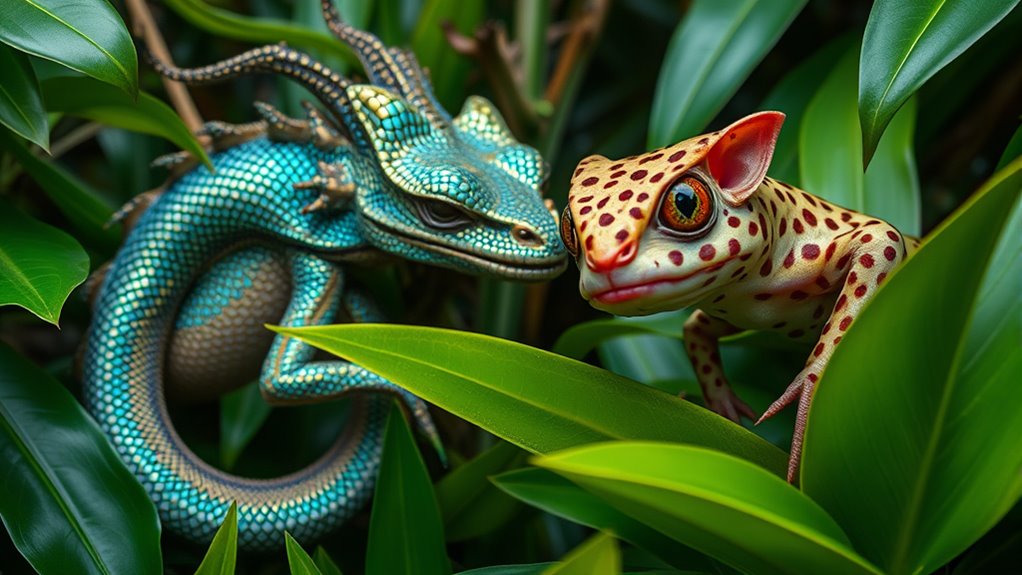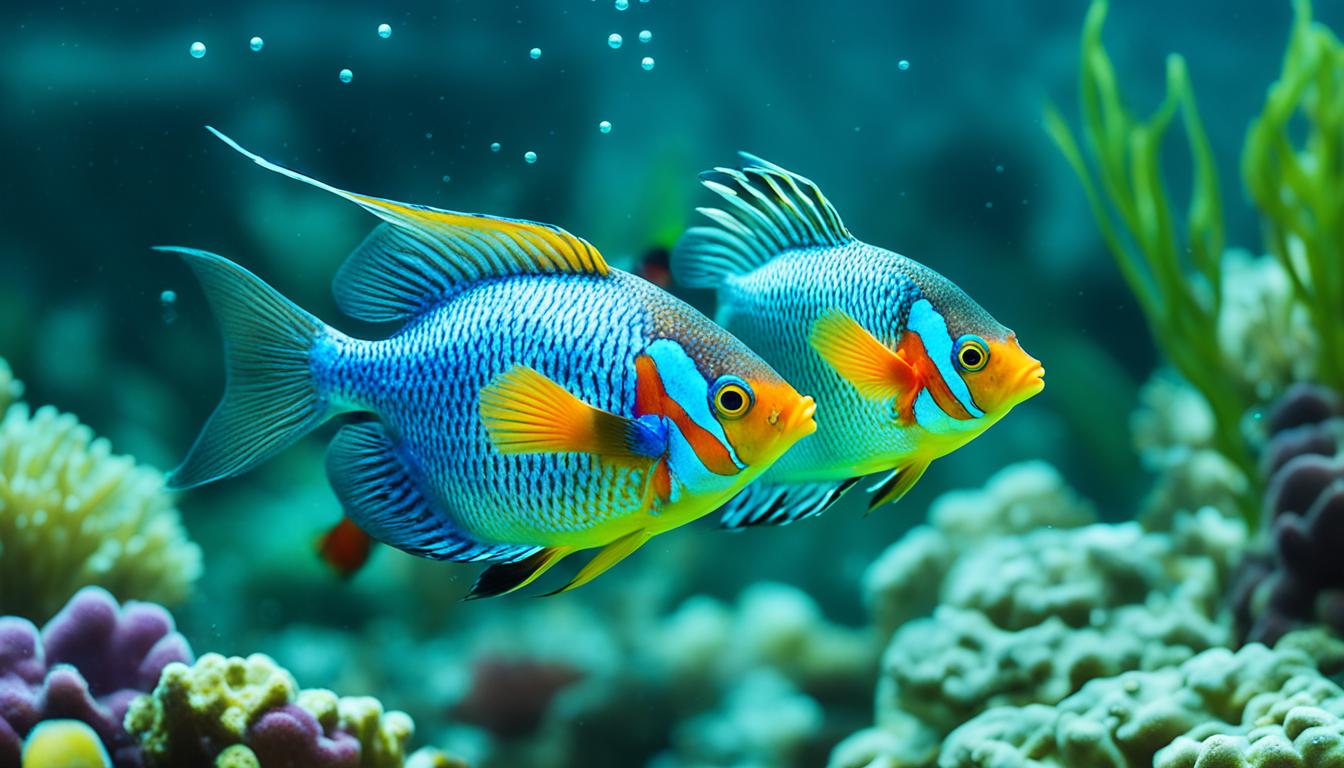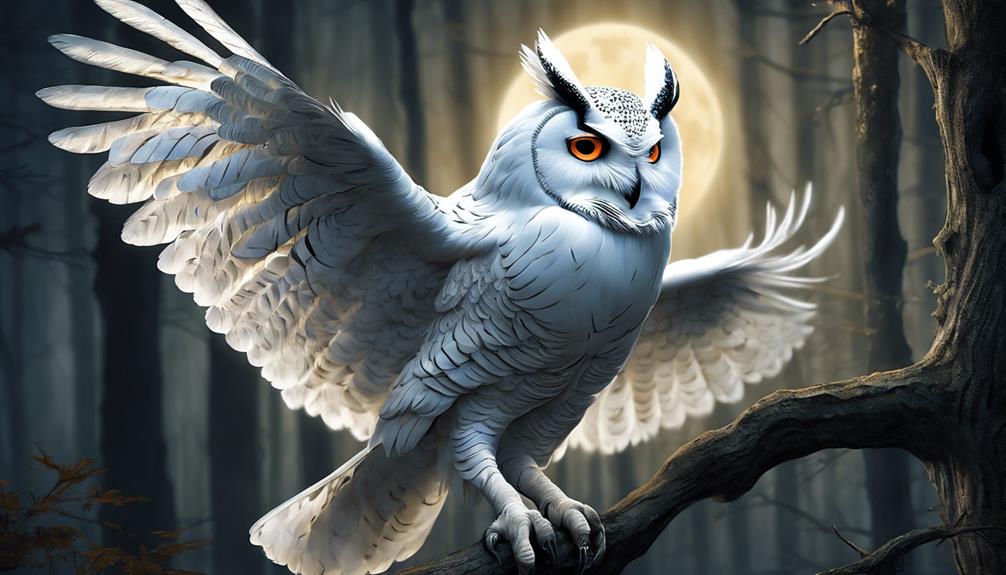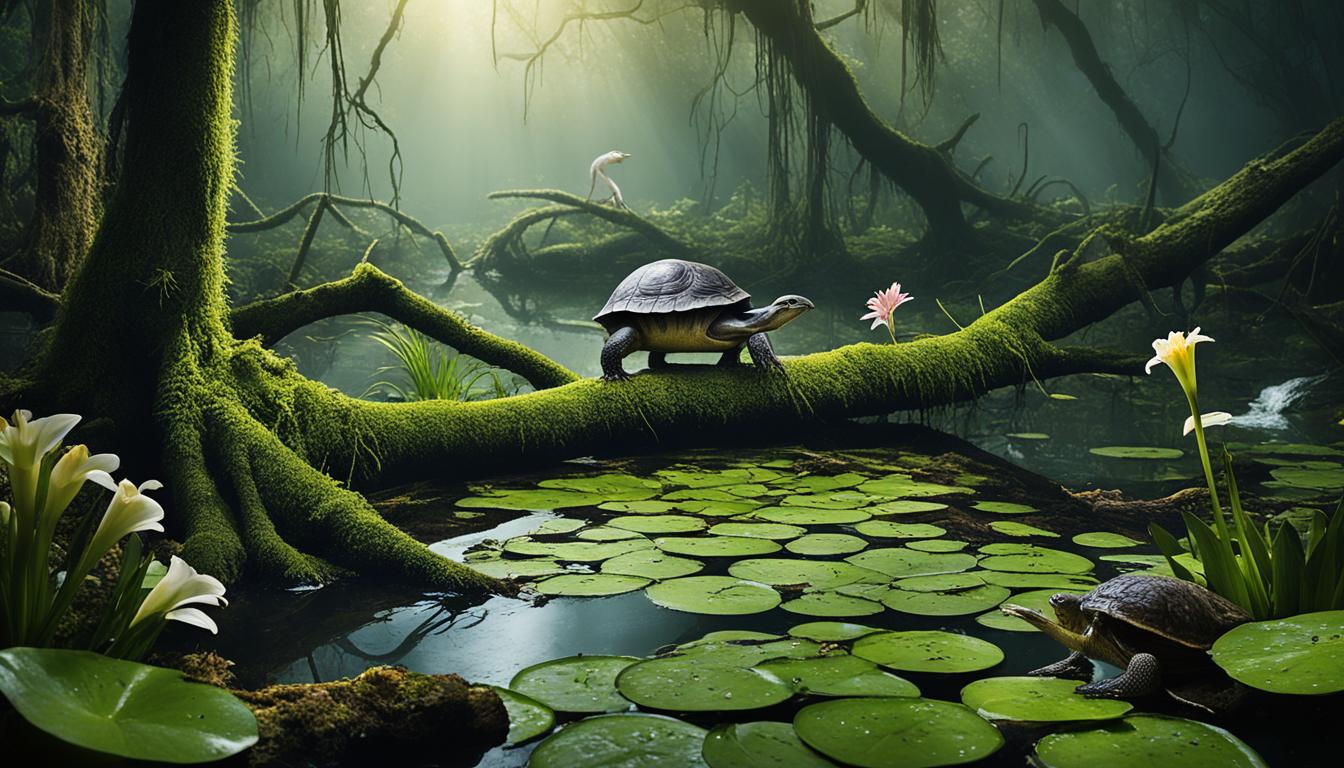Get ready to be amazed by some of the weirdest creatures in the animal kingdom! From the leaf-tailed gecko that perfectly mimics dead leaves to anglerfish using bioluminescence to attract prey in dark depths, nature never ceases to surprise. You’ll also discover animals like the lyrebird that can imitate sounds with astonishing accuracy. Want to see how these bizarre adaptations help animals survive in extreme environments? Keep exploring to uncover even more astonishing creatures!
Key Takeaways
- Many animals utilize extreme camouflage, like the leaf-tailed gecko mimicking dead leaves for survival.
- Bizarre behaviors such as bioluminescence in deep-sea creatures help them attract prey or mates.
- Animals like the lyrebird imitate sounds and calls to attract mates and defend territory.
- Unique adaptations, including mimicry and camouflage, showcase evolution’s creativity in survival strategies.
- The animal kingdom features extraordinary species with bizarre traits that seem almost unbelievable.

Have you ever wondered what creatures walk the line between reality and fantasy? The animal kingdom is full of surprises, especially when you consider how some animals use animal camouflage to blend seamlessly into their surroundings or display bizarre animal behaviors that leave you questioning nature’s creativity. These adaptations aren’t just fascinating—they’re essential for survival, and they showcase the incredible diversity of life on Earth.
Take the mimicry of the leaf-tailed gecko, for example. Its body mimics dead leaves, complete with ragged edges and mottled coloration, allowing it to hide from predators effortlessly. This form of animal camouflage is so precise that even close inspection might not reveal it’s a living creature. Watching these animals in action, you realize how clever evolution can be—each pattern and texture carefully crafted to deceive. It’s as if nature’s playing a game of hide-and-seek, and these animals are masters of disguise.
But camouflage isn’t the only bizarre animal behavior you’ll encounter. Some animals have developed truly strange strategies for survival. Consider the anglerfish, which sports a luminous lure dangling from its head. This bizarre animal behavior attracts prey in the dark depths of the ocean, turning a deadly trap into an effective hunting tool. The creature’s glow is a perfect example of how bizarre animal behaviors can serve a crucial purpose, and it’s a reminder of how much we still have to learn about life beneath the waves. Additionally, animal adaptations like bioluminescence highlight the extraordinary ways creatures have evolved to survive in extreme environments.
Another fascinating example is the lyrebird, known for its astonishing ability to mimic sounds. It can imitate chainsaws, camera shutters, and even other bird calls with uncanny accuracy. This bizarre animal behavior isn’t just for show; it plays a vital role in attracting mates and establishing territory. Watching a lyrebird perform its impressive mimicry, you’re struck by the sheer ingenuity of nature—how these behaviors have evolved to serve specific functions, often in bizarre and unexpected ways.
From animals that hide in plain sight to those that use bizarre behaviors to hunt, attract, or defend themselves, the animal kingdom continually surprises you. These creatures remind you that evolution doesn’t just produce the beautiful or the fierce—it crafts the bizarre and the extraordinary too. Whether it’s through animal camouflage or bizarre animal behaviors, each adaptation reveals the remarkable ways life on Earth has evolved to thrive in even the most extreme environments.
Frequently Asked Questions
Are Any of These Animals Endangered or at Risk?
Some of these bizarre animals are indeed endangered or at risk. Conservation efforts and habitat preservation play vital roles in protecting them. You can help by supporting organizations focused on these initiatives, ensuring their habitats are preserved and threats reduced. By raising awareness and making eco-friendly choices, you contribute to their survival. Your actions can make a real difference in safeguarding these extraordinary creatures for future generations.
How Do These Animals Survive in Their Environments?
Think of these animals as masters of disguise, blending into their surroundings like chameleons in a painted jungle. Their survival strategies include incredible animal camouflage, which helps them hide from predators or sneak up on prey. Some use unique behaviors or physical adaptations to thrive in extreme environments. By mastering these techniques, they turn their habitats into safe havens, ensuring they survive against all odds and stay off the radar of threats.
Can These Animals Be Kept as Pets?
You might wonder if these bizarre animals can be kept as pets. While they seem fascinating, you should consider exotic pet concerns and legal restrictions before getting one. Many of these creatures require specialized care and environments, making them unsuitable for typical homes. Additionally, laws vary by location, so check local regulations. Remember, owning such animals often involves responsibility and ethical considerations that go beyond just wanting a unique pet.
What Unique Adaptations Do These Animals Have?
You might find these animals fascinating, but their unique adaptations reveal their incredible biological mechanisms and evolutionary traits. They’ve developed extraordinary features, like bioluminescence or extreme camouflage, to survive in their environments. These specialized traits serve deeper purposes, hinting at nature’s ingenuity. Understanding these adaptations helps us appreciate their resilience and the delicate balance of ecosystems, reminding us how evolution crafts remarkable creatures in response to life’s challenges.
Are There Any Similar Animals yet to Be Discovered?
You might wonder if there are similar animals yet to be discovered. With ongoing cryptid sightings and unexplored habitats, it’s highly likely that undiscovered species still exist. Scientists continue to explore remote areas, so new bizarre creatures could be uncovered at any time. These animals may have unique adaptations, just like the ones we already know. Stay curious, because the animal kingdom might surprise you with even stranger discoveries ahead.
Conclusion
You might think these creatures are too strange to be real, but they absolutely are. Nature’s unpredictability means the bizarre is often the norm, not the exception. Don’t dismiss these animals as mere curiosities—each one plays a crucial role in its ecosystem. Next time you feel like the animal kingdom’s weirdness is too much, remember, these creatures remind us how wonderfully diverse and surprising life can be. Embrace the odd, and keep exploring!










